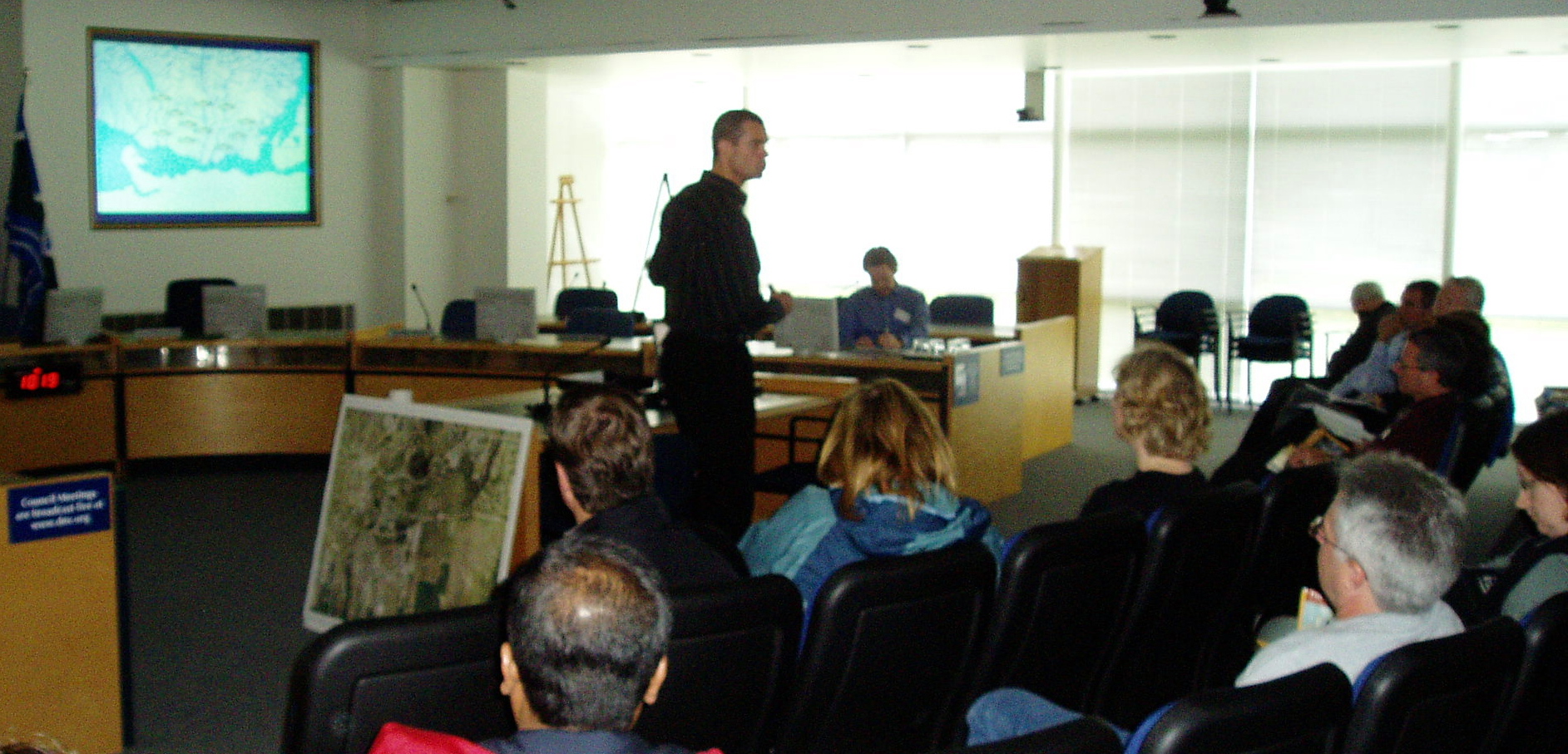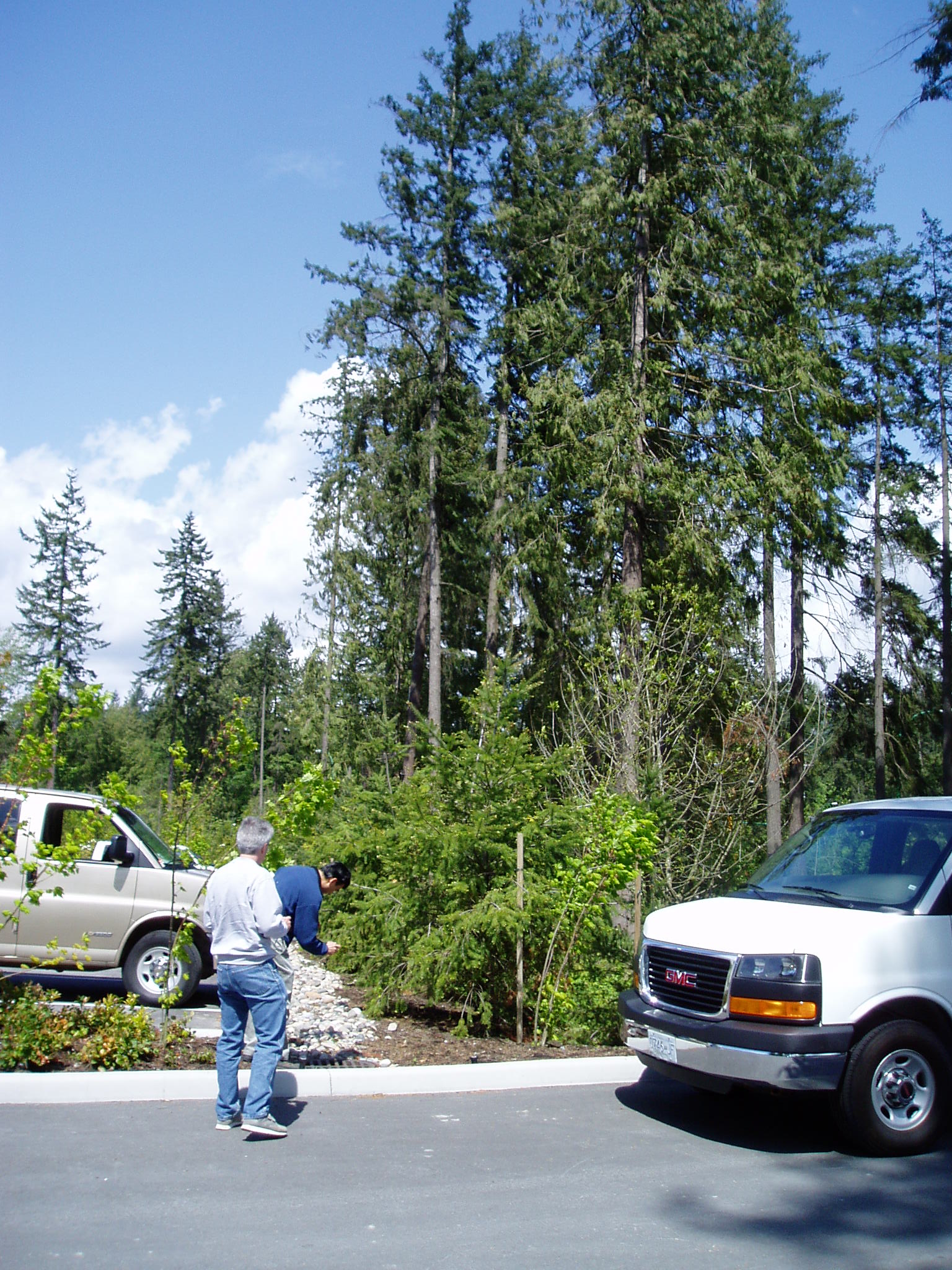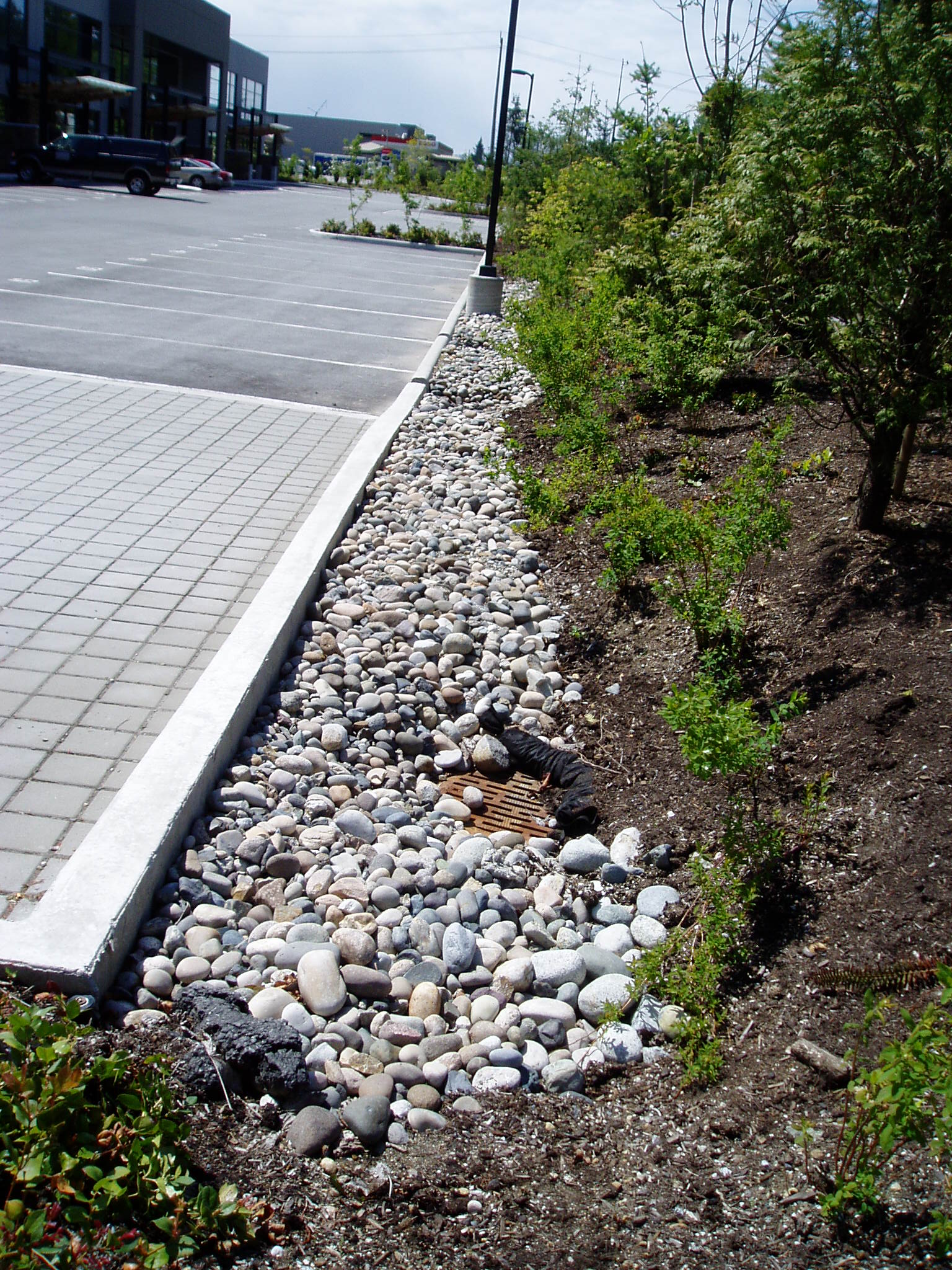Showcasing Innovation in the District of North Vancouver
First in 2006 series under the umbrella of the Celebrating Green Infrastructure Program
In May 2005, the Green Infrastructure Partnership (GIP) conducted a Consultation Workshop in collaboration with the Regional Engineers Advisory Committee of the Greater Vancouver Regional District. Workshop participants included senior managers in local government. To learn more, click on Green Infrastructure Partnership organizes consultation workshops in Metro Vancouver to launch provincial initiative.
The “Celebrating Green Infrastructure Program” was a consultation outcome. The program will create opportunities to network and share “how to do it” experiences on the ground. “Showcasing Innovation” is a workshop followed by field tour. The program is designed for engineering, planning, land development, operations, and environmental departments in Greater Vancouver municipalities.
SHOWCASING INNOVATION IN THE DISTRICT OF NORTH VANCOUVER
The first event – a workshop followed by field tour – was hosted by the District of North Vancouver on May 12, 2006. In the morning, there was a comprehensive and in-depth presentations by District staff. Three projects were featured – a lane, a highway and a local community. The moderator for the morning session was Gavin Joyce, the District’s Special Projects Engineer, who welcomed participants by stating that “the District is honoured to be the first municipality to host a Showcasing Innovation event, and appreciates the opportunity to share our lessons learned in implementing new approaches.”
- Lower Capilano Lane – Selection of porous pavement to infiltrate rainwater runoff was an outcome of an inter-departmental design charrette where the Water Balance Model was a key decision tool. To view the presentation by Richard Boase, click on this linkl Application of Porous Pavement: A Water Balance Perspective
- Dollarton Highway – Initiated almost a decade ago, the highway design integrated a pioneer application of rainwater infiltration. To view the presentation prepared by Marcel Bernier and Richard Boase, click on this link New Dollarton Highway – New Concepts for Arterial Road Design
- Maplewood Flats – As redevelopment proceeds, the complete and compact residential area will complement an eco-industrial networking area founded on green infrastructure principles & practices.To view the co-presentation by Ken Bennett and Doug Allan, click on this link Maplewood – Eco Industrial Planning for a Sustainable Community. For complete information on the project and to access the Final Report, please click here.
In the afternoon, participants were taken by bus to see how these projects have been implemented. Representatives from a dozen Greater Vancouver municipalities were in attendance, as well as other organizations (including the Department of Fisheries and Oceans, the Greater Vancouver Regional District, and British Pacific Properties Ltd).
LOWER CAPILANO AREA – APPLICATION OF POROUS PAVEMENT ON BOWSER LANE
The project was initiated as the result of a petition by local homeowners to Council. The homeowners envisioned a conventional paving project. It was a member of Council who asked Staff to take a second look and identify how an innovative approach could be applied to achieve environmental objectives. According to Richard Boase, the District’s Environmental Protection Officer, “There is no storm sewer in the immediate area such that infiltration into the ground was the viable alternative. Based on recommendations arising from a geotechnical investigation, the foundation for the lane was over-excavated and replaced with granular material to ensure the effectiveness of the infiltration system.”
Above, Richard Boase of the District of North Vancouver borrowed a garden hose to demonstrate the infiltration capacity of the porous pavement. Meanwhile, David Hislop of  the City of Surrey did his own experimenting (opposite) by pouring a bottle of water and timing how long it took for the water to be absorbed into the pavement.
the City of Surrey did his own experimenting (opposite) by pouring a bottle of water and timing how long it took for the water to be absorbed into the pavement.
It was quite a sight for the neighbours when a swarm of people from around the region descended on their lane to observe what happens when water is poured on the lane pavement.
NEW DOLLARTON HIGHWAY – NEW CONCEPTS FOR ARTERIAL ROAD DESIGN
Protection of the ecological sensitivity of the Maplewood Flats foreshore along Burrard Inlet provided the impetus for the innovative approach to design of the new Dollarton Highway. 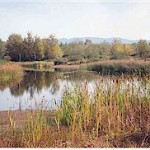 Runoff from the frequently occurring rainfalls is exfiltrated via a catch basin and dispersal drain system that is incorporated in green strips located between the roadway and a meandering path on both sides of the arterial highway. During extreme rainfall events, the runoff overflow is piped via a 1500mm storm sewer to an outfall structure. An oil and grit separator is incorporated in the outfall design. Only low flow events are passed through the separator. Flow is diverted into the separator by means of concrete benching in the storm sewer that forms a small dam in the pipe invert. Extreme flows bypass the separator.
Runoff from the frequently occurring rainfalls is exfiltrated via a catch basin and dispersal drain system that is incorporated in green strips located between the roadway and a meandering path on both sides of the arterial highway. During extreme rainfall events, the runoff overflow is piped via a 1500mm storm sewer to an outfall structure. An oil and grit separator is incorporated in the outfall design. Only low flow events are passed through the separator. Flow is diverted into the separator by means of concrete benching in the storm sewer that forms a small dam in the pipe invert. Extreme flows bypass the separator.
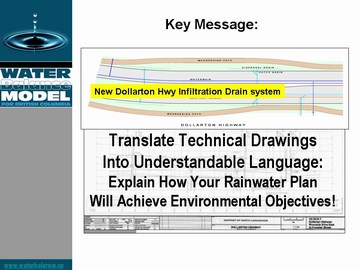
MAPLEWOOD ECO-INDUSTRIAL AREA
Maplewood is located in the District of North Vancouver immediately east of the Seymour River and the Ironworkers Memorial 2nd Narrows Bridge on the north shore of the Vancouver Harbour (Burrard Inlet). The community has chosen to use Eco-Industrial Networking (EIN) and sustainable community planning principles as the basis to pursue these goals throughout the residential, commercial and industrial community.
According to Doug Allan, Senior Planner with the District, “The objective of the Maplewood Project is to develop ideas and identify practical steps to integrate and enhance all aspects of the community, increase the sustainability of the entire community and help Maplewood realize its potential in a more sustainable fashion. This project is not intended to replace the Local Plan which will still remain as the key planning document.”

The Maplewood Project combines eco-industrial networking (EIN) and sustainable community planning principles to identify practical ideas to integrate and enhance the residential, commercial, and industrial activities. To download a copy of the Final Report, please click here.
Eco-industrial networking builds relationships among businesses, governments, and the community to share and more efficiently use resources, such as energy, material, water, land, capital, infrastructure, and people. “For example, one company’s wastes might become another company’s resource”, according to Ken Bennett, the District’s Environment Manager, “EIN also supports better linkages between companies and the communities in which they operate. EIN contributes to a diverse and stable local economy; increases the competitiveness and eco-efficiency of existing businesses and attracts progressive, new businesses to fill identified niches. The combined result is a healthier community and surrounding ecosystem; and a more robust local economy.”
Posted on May 20, 2006


